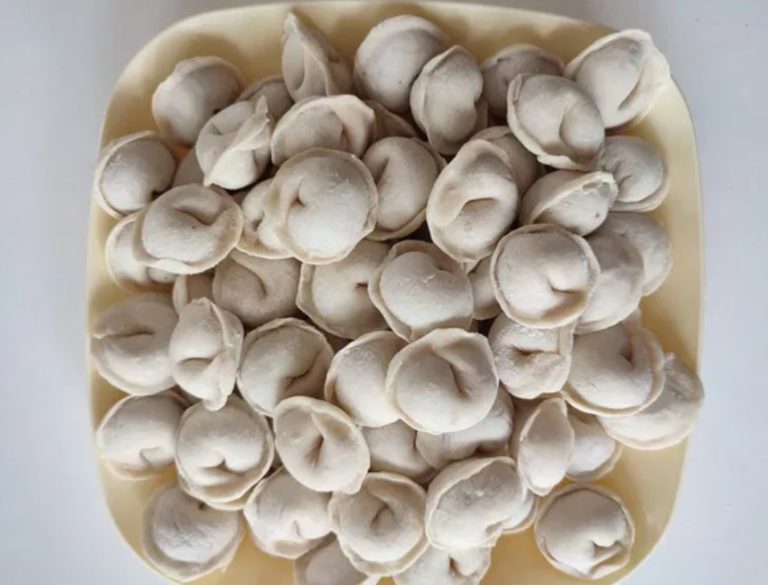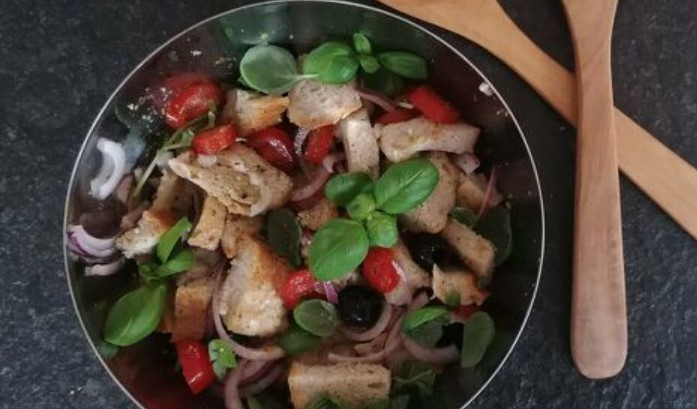Leftovers from Christmas dinner are definitely too good to throw in the bin. We’ll tell you how you can use them instead to make them delicious.
For most who celebrate Christmas, extensive feasting is part of it. Especially with guests, it is not always easy to estimate how extensive the Christmas menu must be. There is often leftover food that you don’t have to throw away. Use these tips to use up leftovers from Christmas dinner.
Processing dumplings: this is how it works

Dumplings are a real winter classic and the leftovers are easy to use up after Christmas dinner. The easiest way to do this is to fry them. Cut them into slices and fry them on both sides in a little hot oil. Fried potato dumplings taste both savory with salt and pepper and sweet with sugar and cinnamon. The savory variant goes well with various types of salad, for example. But the fried dumplings also taste great with cranberries.
Alternatively, you can also cut the dumplings into slices and fry them together with onions and vegetables. With spices such as paprika powder and herbs such as parsley or chives, you get a delicious dumpling pan.
By the way: When you prepare the dumplings, you can use some older bread to fill them.
Use leftovers from Christmas dinner: kale
Kale is also often on the Christmas menu. You can process the leftovers of the winter vegetables into stuffed puff pastry or kale baguette, among other things.
You can also freeze processed kale without any problems. It is best to freeze the vegetables in portions. You can defrost it as needed and eat it with pasta or potatoes, for example.
For filled puff pastry you need:
1 clove of garlic
Kale
seasoning yeast flakes
Salt
pepper
Puff pastry (tip: make your own puff pastry)
And this is how easy it works:
Peel the garlic clove and cut it into cubes.
Toss the kale with the garlic, seasoning yeast flakes, salt and pepper.
Roll out the puff pastry and spread the kale evenly over it.
Now roll it all up. Prepare the baking tray by lining it with baking paper or a substitute for baking paper.
Place the puff pastry on the baking sheet. If you bake the whole roll, you will have a kale strudel later. If you cut the roll into one to two centimeter thick slices before baking, you will get individual kale snails. Before baking, make sure that the snails are lying individually on the baking sheet.
Set the oven to 180 degrees Celsius top/bottom heat. The puff pastry is ready as soon as it smells fragrant and turns brown.
Tip: You can vary the kale filling with different spices and other ingredients, for example with paprika powder, nuts, olive oil or fried onions.
Kale baguettes made from leftover Christmas dinner
You can also use up the leftovers from your Christmas dinner with baguette. For these kale baguettes you will need:
1 onion
smoked tofu
vegetable oil
Kale
Mustard
Baguette (tip: bake a baguette)
optional: salt and pepper
How to prepare the baguette:
Peel the onion. Dice the onion and the smoked tofu.
Heat some oil in a pan and sauté the onions and smoked tofu for a few minutes.
Add the kale and mustard to the pan and mix together. If necessary, you can season the kale with salt and pepper.
Allow to simmer for about 5 minutes, stirring occasionally.
Meanwhile, slice the baguette.
Spread the kale evenly over the baguette slices.
Finally, put the whole thing in the oven at 180 degrees Celsius for about ten minutes.
The baguettes are good as a starter or snack.
Leftovers from Christmas dinner: red cabbage
You can also easily freeze ready-made red cabbage. Put the red cabbage in portions in screw-top jars and store them in the freezer. You can defrost and heat the red cabbage at any time as an accompaniment to mashed potatoes or gnocchi, for example.
You can also use red cabbage to make strudel or puff pastry pockets:
Mix the herb with any other ingredients you have around the house.
For example, fried onions, chili, walnuts, garlic and curry powder or raisins are suitable.
Then fill the puff pastry with the red cabbage mixture and bake until it has a nice golden brown colour.
Another way to use up red cabbage leftovers from Christmas dinner is in a red cabbage pan. For this you need:
1 onion
Potatoes (pre-cooked, alternatively: leftover dumplings)
mushrooms
vegetable oil
Red cabbage
Caraway seeds
paprika powder
Salt
pepper
How to prepare:
Peel the onion and cut it into cubes.
Cut the potatoes or dumplings into cubes.
Clean the mushrooms and cut them into slices.
Heat the vegetable oil in a large pan.
Sauté the onions in the hot oil for 2-3 minutes.
Add the diced potatoes and mushrooms and sauté for about 10 minutes, stirring regularly.
Now add the red cabbage. Mix the ingredients together and season with the spices, salt and pepper. After another three to five minutes you can serve the red cabbage pan.
Use leftovers from Christmas dinner: More tips

If you had meat for Christmas, you can cut the leftovers into strips and fry them together with vegetables or fried potatoes. The same goes for vegan alternatives, of course.
If you have an excessive amount of leftover fruit, toss it in the blender and make a breakfast smoothie out of it.
Melt down leftover chocolate from Christmas dinner and use it as a frosting for cakes or cookies. With hot milk or a plant drink of your choice, it becomes hot chocolate.
Slightly older speculoos are good for making speculoos tiramisu.
Refill the leftover food as soon as possible and put it in the fridge. So you have a higher chance that nothing spoils.
If you still have sealed groceries that you no longer need, give them away. Apps like UXA can help you with this.






